Lemon variety Pavlovsky
If there are exceptional, legendary varieties of indoor lemons, then this is probably our current hero. In any case, for the countries of the former Soviet Union, he is out of competition! To him, like no other variety of homemade citrus fruits, the word "most" fits. The most common, the most famous, the most unpretentious, and even the most "native". As a rule, almost all people keen on this occupation began their journey to the fascinating country of citrus growing from Pavlovsky. Meet such an outstanding plant!
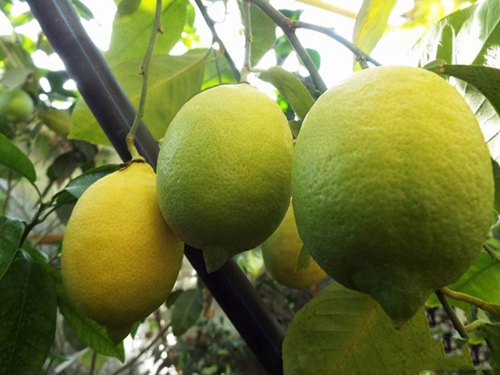
From Turkey - to the banks of the Oka
The history of the appearance of the Pavlovsky variety knows, without exaggeration, every florist who is keen on citrus fruits. Maybe not in details, but in general terms - for sure!
Like all historical events, this also has several options, differing, however, only in minor nuances. Here is the most common, wandering from directory to directory, from site to site. Most likely, the story was based on the text of the famous Soviet popularizer of indoor citrus growing V.V. Dadykin, published in the 60s of the last century in the newspaper "Selskaya Zhizn". Although, of course, Dadykin did not invent it himself, but proceeded from previously published sources.
So, the story says that in the middle of the 19th century, the merchant Ivan Karachistov lived in the town of Pavlovo, on the Oka (now Nizhny Novgorod province). In his trade affairs (and he traded in metal products) Karachistov went on a long trip, visiting the Turkish cities of Ankara and Istanbul.
After a successful deal, the Turkish business partners presented Ivan with several cuttings of local lemons. These plants were already widespread in Turkey at that time. The merchant brought the cuttings to his homeland and presented them to his relative, a certain Elagin, who knew a lot about plant growing. Elagin fussed in advance, rooted the cuttings, gave them the opportunity to bear fruit ...
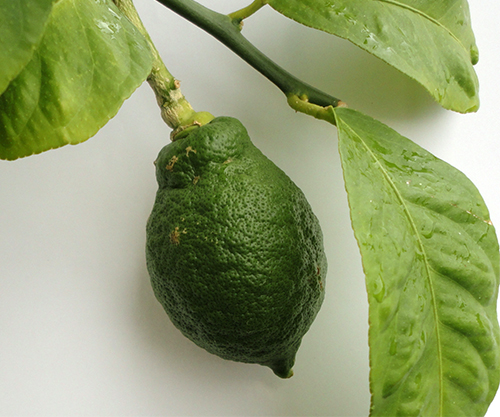
The fame of the unprecedented "golden apples" spread through the streets of tiny Pavlov. It turned out that the cuttings of the plant root well. The rest is predictable; a few years later, almost in every local hut on the windowsill, an overseas miracle fruit flaunted! Pavlovsk lemon began its march through the cities and villages of the Russian Empire.
Secret of success
Perhaps it wasn't quite like that. For example, to us - specialists in citrus fruits, it seems unlikely that Karachistov would bring cuttings to his homeland. Even now, with electricity, refrigerators and fast trains, keeping the stem on the way is not so easy, let alone those times! It is logical to assume that he brought already rooted plants in pots. But does this really change the essence of the matter?
Also, information is often found that, before this story, Russia did not know lemons at all. This is not true, in the Empire the first lemons, judging by historical information, appeared at least three centuries earlier. The autocrat Peter I was a great lover of citrus fruits. Under him, a real “greenhouse city” - Oranienbaum - was laid in the vicinity of St. Petersburg. Lemons also grew in the Kremlin, in the so-called "ranzhera chambers".
Interesting! The success of Russian citrus growers in Oranienbaum was amazing! They received whole carts of lemons and oranges, removing them from trees in the middle of winter and delivering them to the king's table at Christmas. For the sake of fairness, it should be said that specialists who were discharged from Europe, primarily from Holland, helped the local gardeners.
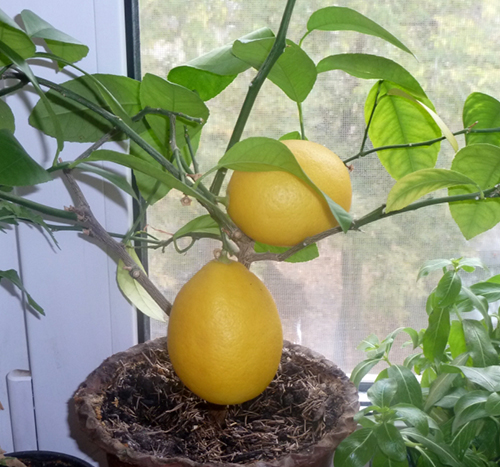
The history of the development of citrus growing in the Russian Empire is a separate, fascinating topic, but, alas, it only distracts us. Let's return to the described variety.
Pavlovsky lemon, if it turned out to be the first in something, then in its popularity, nationality. Before him, citrus fruits were the privilege of only noble and landowners' greenhouses. Common people and lemons existed, as it were, in different worlds.The peasants, as well as Pavlov's artisans, understood the agricultural technology of this plant, learned how to easily and massively propagate it. Fortunately, the original nature of the variety favored this: it was shade-tolerant, the cuttings rooted without problems even in water.
From town to town, from village to village, the area of a new plant for Russia expanded. The variety was quickly named Pavlovsky - after the place of its origin. It became truly popular, because not specialists, but ordinary people worked on its development and improvement. Hundreds of thousands of cuttings over many decades, a great many hands that participated in this massive selection experiment - it is unlikely that the European citrus growing knew at least one similar example!
Description of the variety
Such an unusual biography has left an imprint on the properties of this citrus. The fact is that an endless series of cuttings, without the infusion of "fresh blood", fixed certain kidney mutations within the variety. Moreover, for certain, some peasants, accidentally or deliberately, achieved the fruiting of Pavlovsky's seedlings. Logically, they differed even more from the "original" that was once brought.
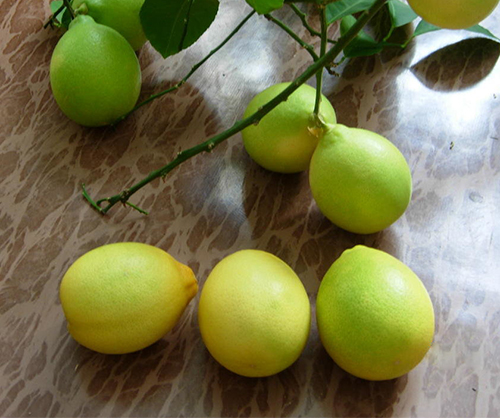
These factors led to the fact that within the variety appeared many lines, shapes, different from each other. Differences manifested themselves in different ways: in the shape of the leaves, in the taste and size of the fruit, in the strength of growth.
Crohn, its external characteristics... Differs in compactness, roundness, relatively small size. Pavlovsky lemon rarely exceeds 1.5 m, usually it is no more than a meter. The branches, often hanging downward with their tips, are equipped with many thorns: green at first, brown at a later age.
The color of the bark of young shoots is green, over time it acquires a grayish-yellow tint. A characteristic feature is the presence of small longitudinal cracks in the bark.
The leaves are salad green, light, shiny, rather large in comparison with the overall size of the crown. Usually the width of the leaf (5 - 7 cm) is about half its length. It is difficult to talk about the shape of the leaves, for different trees it can be very diverse: round, ovoid, elongated, lanceolate. The same can be said for the serrations at the tips of the leaves. Sometimes there are almost no denticles, sometimes there are many of them and they are large. In any case, in this variety, the teeth are always located closer to the top of the leaf. The leaf petioles are short, practically without lionfish.
The crown develops well even in poor lighting conditions, foliage easily tolerates dry air. Nevertheless, the tree still grows better, and especially bears fruit, on windows with a southern orientation. But this lemon does not like the direct sun! He also doesn't like being outdoors.
Flowering features... The variety is remontant, that is, it can bloom several times a year. As a rule, there are two waves of flowering and rapid growth: in early spring and in the first half of autumn. Individual flowers appear in summer and even winter, but they are usually not pollinated.
The first flowers on a cuttings plant can form in the second year of life. Real flowering and fruiting occurs in the fourth year. The flowers are bright white, almost devoid of a purple tint. The size of the flowers is small, 2 - 3 cm in diameter. The smell is pleasant and strong. Flowers are located in the axils of the leaves, most often singly, sometimes in small inflorescences. The plant self-pollinates well.
Fruit characteristics... This lemon has a high yield. An adult tub tree at the age of about 15 years can produce up to fifty fruits with an average size of 180 to 250 grams. You can often see larger fruits, weighing about 500 grams.
The palatability of the fruit is high. The pulp is juicy and aromatic, although there are forms with excessive acidity. Other features of the fruit:
- The color is yellow, bright.
- The shape is different, like the shape of the leaves. Still, oval, slightly elongated lemons predominate.
- The peel is of medium thickness, often thin, about 3 mm. It has a special aroma and even a peculiar taste.This is an excellent fruit just "for tea drinking".
- The surface also varies from completely smooth to rough, even slightly bumpy.
- The fruits of this variety ripen for a long time, they are able to remain on the branches for more than a year, if they are not picked in time.
Interesting! It is noticed that the fruits at the ends of the branches are always sour than those that are tied closer to the stem.
The description given here should not be regarded as dogmatic. We repeat, Pavlovsky has many forms, both more successful and less valuable. For example, there are trees of this variety, which have almost no thorns on the branches.
Unfortunately, now it is more and more difficult to find a quality form of a real Pavlovsk lemon. Many lines are degenerating, purposeful breeding work on this miracle of folk citrus growing has not been carried out for many decades.
But our current hero is worthy of all respect! For one and a half hundred years, he was a real lemon for the people, who glorified a small town on the Oka. Residents of Pavlov did not remain in debt, on the central street of the city they erected a monument to their "fellow countryman" - Pavlovsky lemon! It seems that there is no such monument in the whole of Russia.




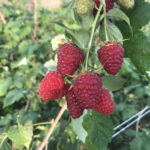
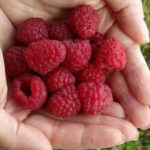



Many years ago, back in Soviet times, I ordered Pavlovsky lemon by mail from the nursery. They sent it in a parcel in wet sawdust, or rather, in two parcels, since I ordered two copies. And I did the right thing, that I ordered two seedlings, because one seedling was sick for a long time and, in the end, died. And the second took root perfectly. A year later, it began to bloom, and fruits were set. But, I remember, two ovaries remained. The rest of the lemons stopped growing and fell off. I think the tree itself regulated how many lemons it could grow, because it was still small. The lemons were small, slightly larger than a chicken egg, but fragrant. The rind is thin. This plant loves attention and care very much. You can't overdo it with watering, but you can't overdry it either, it doesn't like to change the place. The crown needs to be looked after too. I removed the branches growing inside the crown. Unfortunately, I had to give away my lemon tree due to the move. Then there were attempts to grow other varieties of lemons from cuttings, but they were unsuccessful. If it were possible, I would order Pavlov's lemon again.
This is a kennel from Pavlovo! I want to try to order a tree from them and not only a lemon, but also a tangerine. My ancestors come from the r.p. Sosnovskoe. This is a neighboring area from Pavlovo. As a child, when I visited my grandparents, I was always happy about this tree! It was about a meter and a half in height and the same width + a tub 60-70 cm high and 50 cm in diameter. The scent was on the whole hut from flowers, foliage, and hanging fruits! it looked very nice. At the same time, fruits of varying degrees of ripeness were hanging on the tree and there could be flowers. There was a lemon in the corner, between two windows. One faced east, the other south. No one has ever moistened the foliage. Only the soil moisture was monitored. Rather, my grandmother just already knew how many times a week to water it (with rainwater). He felt wonderful and bore moderately. By the way, when visiting MANY relatives, I remember that everyone had lemons. And three or four grandmother's sisters and grandfather's relatives, those who lived in large BRICK houses by the then village standards, also had tangerines.As a child, they attracted me even more. The crown is short, very "curly", deep green. The aroma from them also went awesome! But not the same as from lemons, his own. The fruits were absolutely similar to the store ones. By the way, in those years it was not at any time to go to the store and buy citrus fruits, even in Gorky, where I lived with my parents. Therefore, I was very attracted by these yellow and especially orange fruits! The lemons tasted much more aromatic than the purchased ones. Divine addition to tea, for example, on a frosty winter day. The crust is medium in thickness, the seeds are large and there were few of them. I also remember the taste of tangerines, because the little guest was always treated to a fruit, which he looked at with such lust. Well, the taste was less appealing than the sight. If you try to eat it in slices, like ordinary tangerines, then an unpleasant bitterness appeared in your mouth. Therefore, they peeled the tangerine, as it is now customary to say with the chefs, for a full fillet. That is, removing the films that separate the lobules. Then the fruit gave off its juicy, not sugary sweet taste. And it was then a small miracle for a child in the middle of winter.
It is worth noting that I have tried many times to grow these plants in my city apartment. However, for various reasons, my experience was unsuccessful. My attempts have been going on since childhood, or rather my youth. I do not want to leave them even now, at more than forty years old))). To my great regret, the windows of my current apartment mainly face north, only one window is south, and there I placed the children. So the hope for a successful result this time I have doubts, but I will try. I really want to fill the house with a wonderful aroma from childhood!
Indeed, everyone probably started their hobby for citrus fruits with Pavlovsky. I bought a one-year-old grafted tree back in the 90s, it was a rare success! In the same year, it bloomed, the flowers were insanely fragrant, they had to be removed so as not to destroy the plant. A year later, he bloomed again, tied 1 lemon. Grew up on the northeastern side, quite successfully. Probably, it was the most long-awaited fruit, and therefore the most delicious. Thin, no more than 2 mm crust, the lemon itself is tasty, juicy. But, errors in watering in relation to citruses are fatal, it was not possible to save the plant. Later there were also Meyer, Novozelandsky, Panderoza from the Orenburg nursery - but they could not be compared with Pavlovsky.